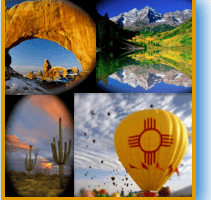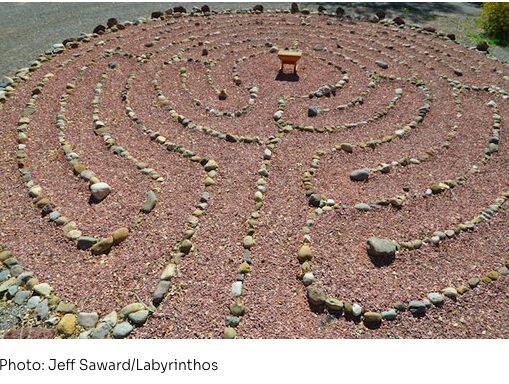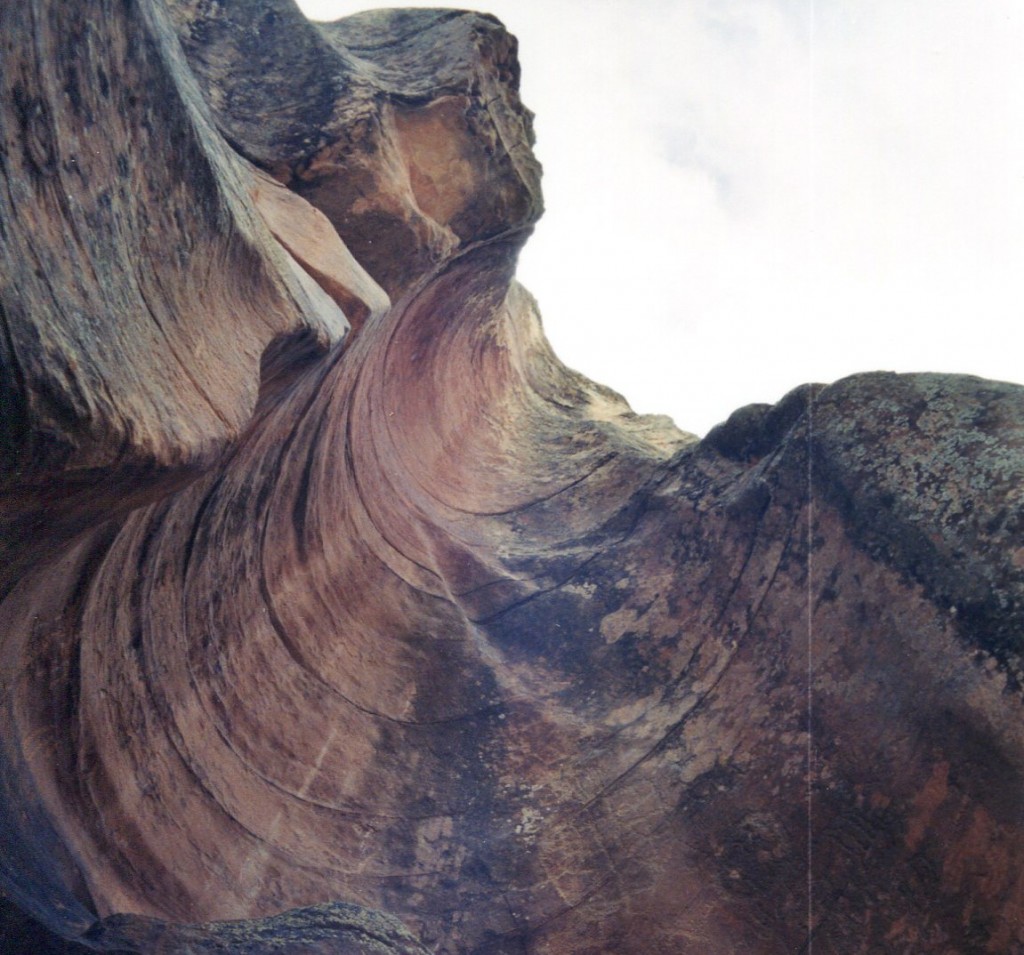While I was living in the White Mountains of Arizona, I had an opportunity to build a seven-circuit “Cretan” labyrinth, named after those found in ancient Greece on a friends property. The location was decided on the south side and down a short incline from her home.
There were plenty of short old logs laying around and a creek was not too far away. It was perfect. We named it the Blue Star Kachina Labyrinth from the “Book of the Hopi” by Frank Waters.
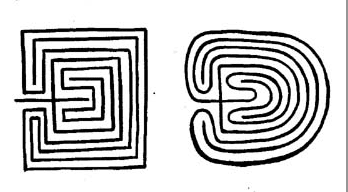
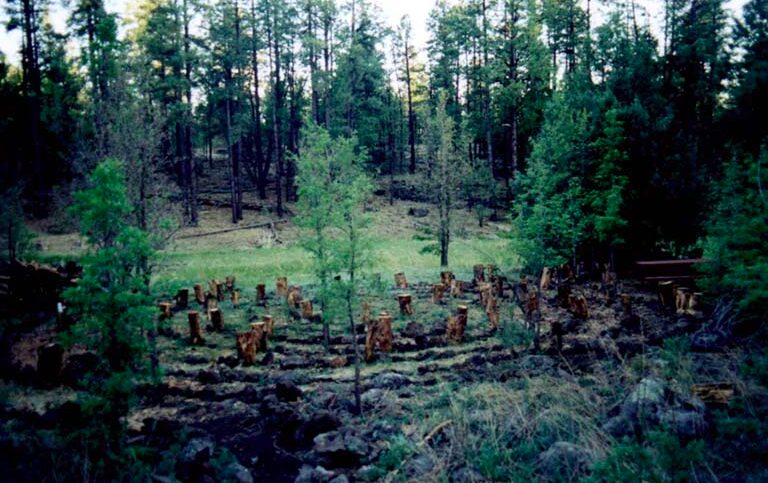
A Network of Paths
Just building this network of paths brought in many mystical experiences for us. Before we even finished people from the community came to participate in our project. It truly turned into a public event.
The labyrinth is an ancient esoteric tool that can help us accomplish a “shift in consciousness” as we seek spiritual maturity. It can help us find that sacred space where the inner and outer worlds connect.
Labyrinths are usually in the form of a circle with one well-defined path that leads us into the center and back out again. This path is what sets the labyrinth apart from a maze. Mazes offer a choice of paths, dead ends and cul-de-sacs.
Mystical Experiences Happen
People have described their labyrinth experiences in term of energy: “The center is really powerful tonight,” or “I was drawn to one spot, so I stopped and meditated for awhile.”
The origins of labyrinths are not known, but they date back for thousands of years and have been found in places as diverse as Egyptian tombs, Cretan coins, Celtic stones and in the Pima and Hopi Indian traditions in Arizona. Some believe labyrinths to have been used as portals to the spirit world.
They offer a special kind of spiritual balm and symbolism not available in anything else. They suggest that the people of ancient cultures walked the labyrinth for good fortune, protection, connection with their sacred center, pilgrimages and healings–reasons that resonate with us today.
People today are looking for clues to life’s many dilemmas. Much of our spiritual seeking is driven by the desire to manifest our unique and individual gifts in the world. Somewhere within us there is a deep, sometimes buried, sense that we have a special task.
Spiritual restlessness is rampant nowadays partly because many of us feel we are not using our gifts. Many people find their way to the labyrinth searching for their own special talents. They come for insight into how their unique skills can serve the world.
Walking the labyrinth clears the mind and gives insight into our spiritual journey, therefore allowing us to experience the rhythm of our souls and helping us discover the sacred in everyday life.
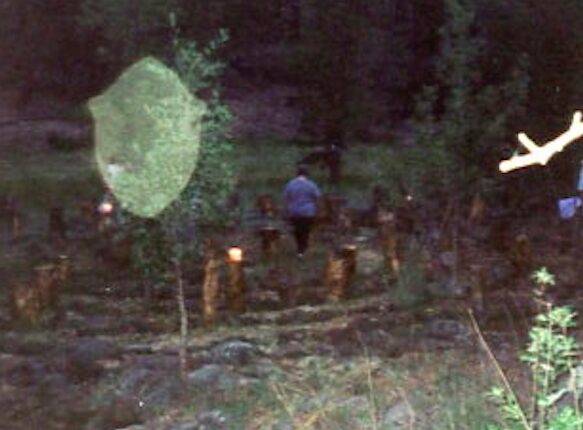
Each Time is Different
By walking a labyrinth we are rediscovering a long-forgotten tradition. The mysterious winding path that takes us to the center becomes a metaphor for the healing journey, perhaps a mirror for where we are in our lives. Its circle, with its seven rings, is a symbol of wholeness and unity and is reflective of the world we live in and our longing for wholeness.
The circular path inward cleanses and quiets us as we are lead in. The unwinding path integrates and empowers us on our walk back out. Know that all we need to do is put one foot in front of the other and we will get to the center of the labyrinth–and to your own center–and back out again.
Walking the path does not demand of great amount of concentration in order to benefit from the experience, however, the journey can be enhanced immensely by advance preparation, a sense of openness and reflection afterward. The most powerful influence you can create for your labyrinth experience is your intention. Walking the labyrinth is a body prayer. It is non-threatening; all you are asked to do is walk.
Don’t stop and try to figure out where the path goes, you will be guided to its center. Stepping out of one’s linear mind is often the most challenging part of the walk. Even though one has been assured that the path leads to the center, some do not surrender easily and may stop walking during the first part, trying visually to figure out where the path goes. This can be a valuable lesson about control and surrendering to the process.
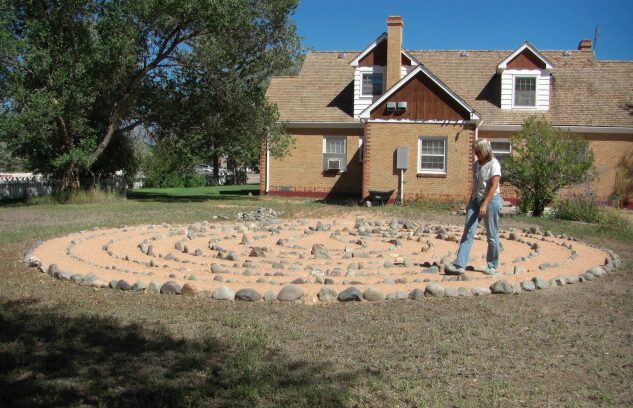
Creating Your Intention
Before entering, stop and consider what is on your mind. If seeking a change is one reason for walking the labyrinth, think about what kind of change you seek. Having a clear idea about the change you want to make will help you create an intention that will yield the desired result.
The labyrinth functions like a spiral, creating a vortex in its center. Usually, it is a surprise to reach the center because the long winding path seems so “illogical.” We don’t know we’re there until we’re there, which is often true in life. After we have quieted the mind on the labyrinth’s path, the center is the place for meditation and prayer.
A labyrinth walk can set into motion many different thought patterns, emotions, energies, ideas and questions. None may lead to insights or answers immediately, but which may eventually produce transformations long after the walking meditation has been completed.
“Walking the labyrinth is another way of tapping into forces beyond our normal conscious mind. It takes us to some ancient part of ourselves, as old as the turning of the planets and stars, as old as goddess and earth energies, back when night was dark, when people knew the sky and nature was part of us and we of it.
This is something lost in the modern world and the imbalance that it causes cries out for resolution. That’s why the labyrinth touches so many people so forcefully,” said Robert Ferre’, Director of the St. Louis Labyrinth Project.
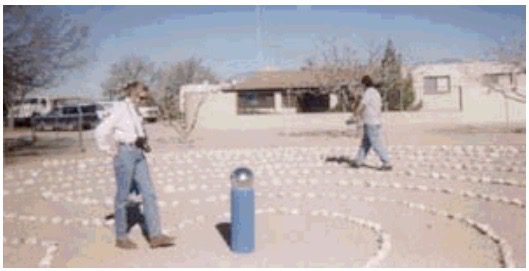
The Labyrinth Resurgence is Still Growing
There are more than 1,000 labyrinths in the United States today. As the resurgence of interest in labyrinths continues to grow around the world more and more, communities and cities are using this tool for healing and deepening self-knowledge. The labyrinth may truly be a tool for our times in providing a space to listen to our inner voice and come to grips with our role in the new millennium.
Blue Star Kachina Labyrinth is no longer open to the public. Mainly because, Barb Poiriez, co-creator of the Blue Star Kachina Labyrinth has moved on. However, I do encourage you to seek out other labyrinths. Many have popped up in the last 20 years and are still being built all over the world. Interacting with the labyrinth has the effect of increasing your energy field, balancing of the chakras (or energy centers), and quite possibly opening one to guidance and healing.
Suggested Further Reading on Labyrinths:
The Way of the Labyrinth, A Powerful Meditation for Everyday Life by Helen Curry
Sacred Space, Sacred Sound by Susan Elizabeth Hale
The Labyrinth Society– There is a labyrinth locator on this site
Exploring the Labyrinth: A Guide for Healing and Spiritual Growth
